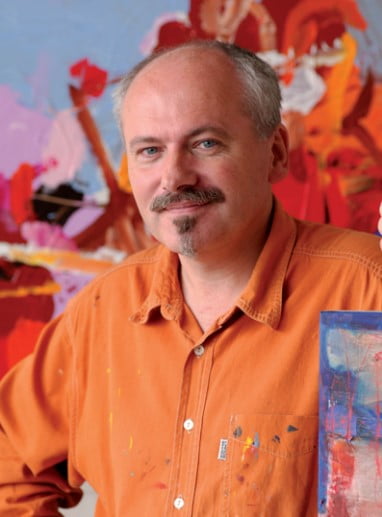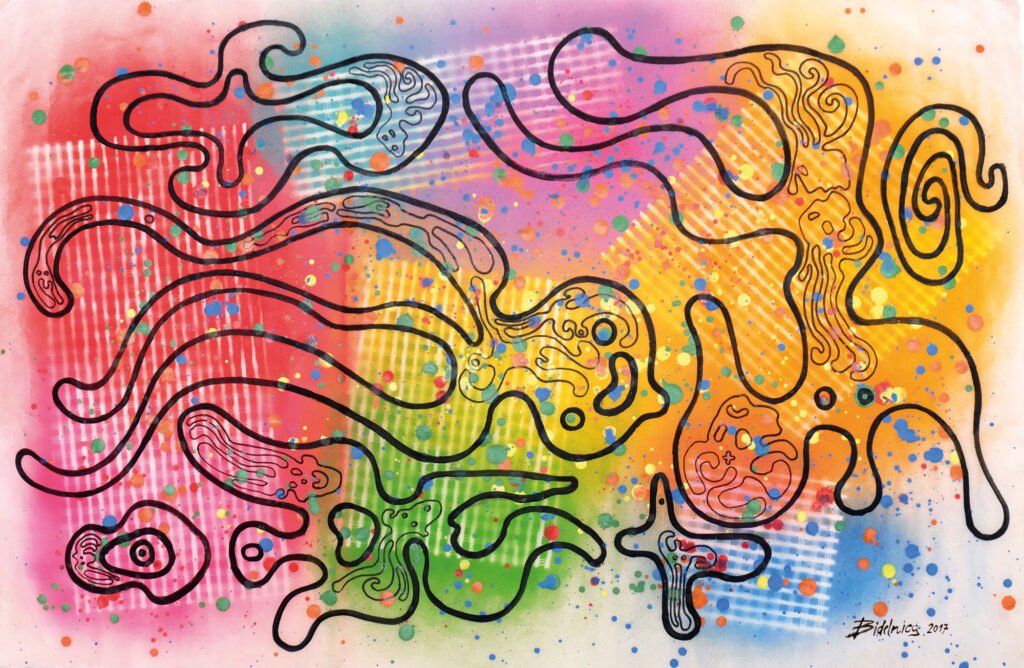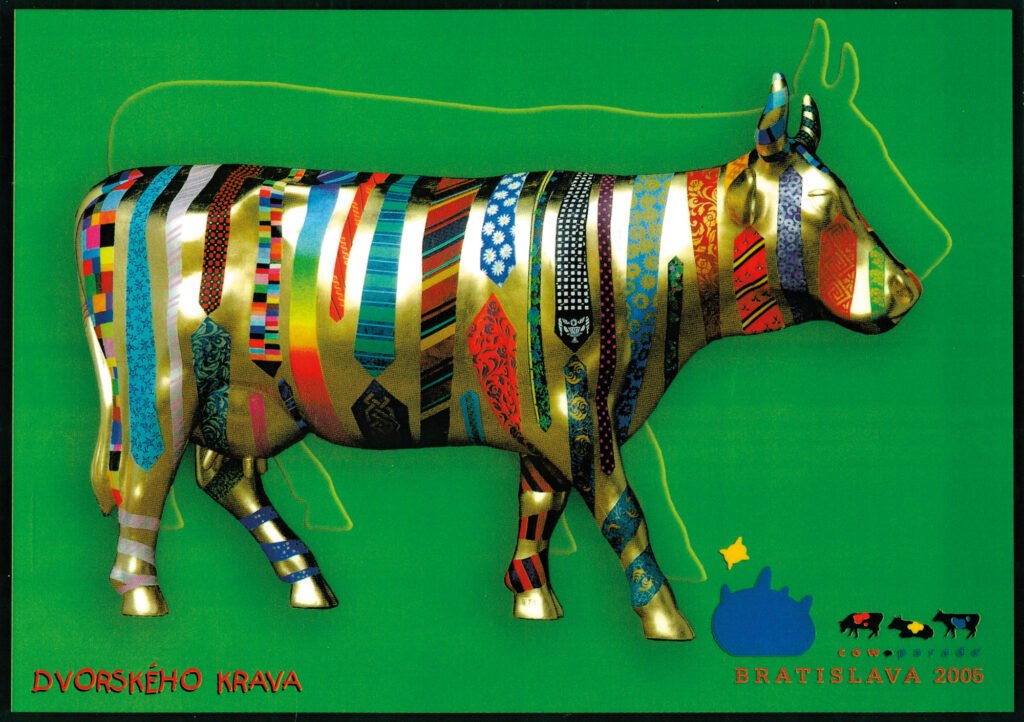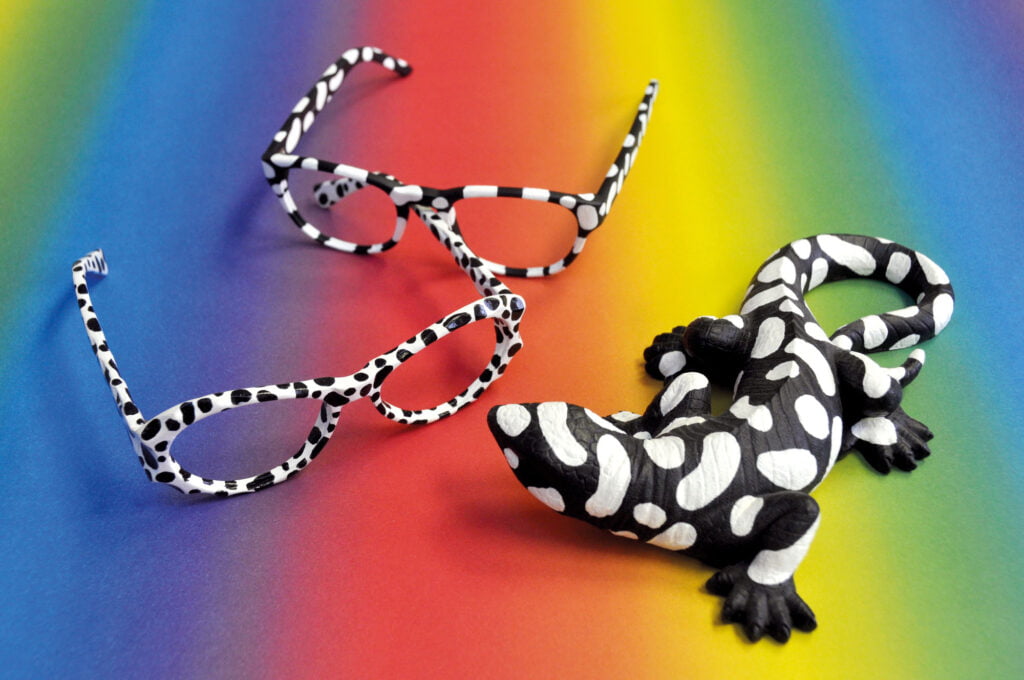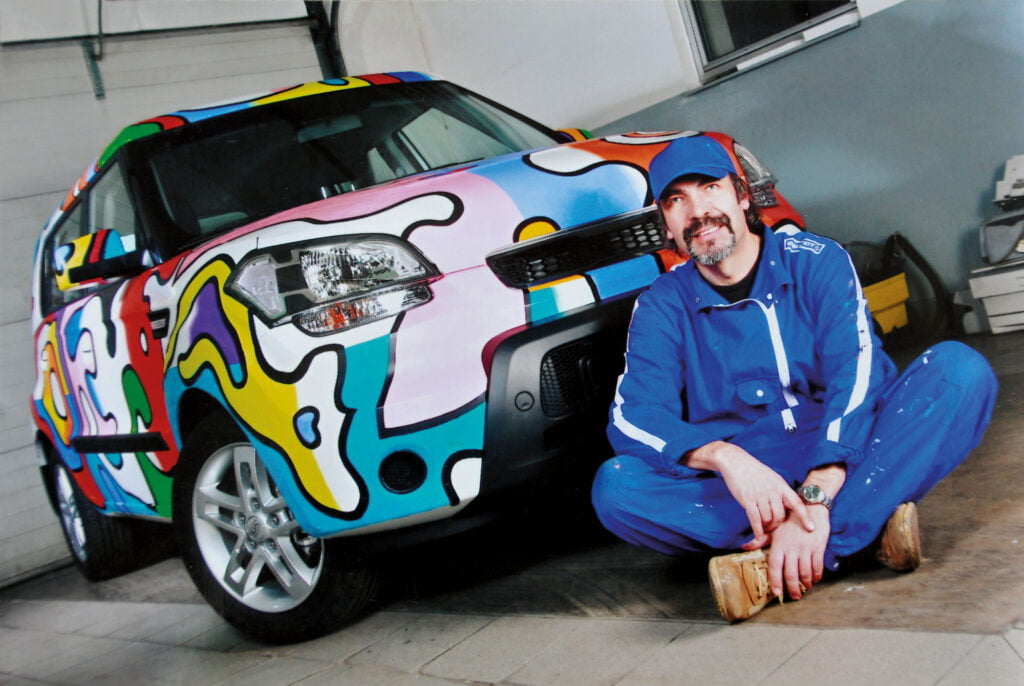Maliar posadnutý tvorivou prácou. Tak možno v prvom rade charakterizovať Daniela Bidelnicu, keď ho navštívime v jeho bratislavskom ateliéri preplnenom obrazmi plošnými i priestorovými (ako inak možno nazvať objekty ním pomaľované). A všetko je prežiarené farbami. Farby vládnu. A predovšetkým pracovitosť, až fanatická. Tu si uvedomíme, že korene úspechov spočívajú v nej, že k výsledkom sa umelec dopracúva prácou, nie proklamáciami. Samozrejme, treba k tomu nadanie i vzdelanie. Oboje Bidelnica získal vrodeným talentom a štúdiom na Vysokej škole výtvarných umení v Bratislave, kde promoval v roku 1983. Jeho doménou bola monumentálna maľba. Vyštudoval u doc. Ivana Vychlopena a prof. Eugénie Lehotskej – obaja boli odchovancami vynikajúcej školy prof. Petra Matejku, tak ako rad ďalších vynikajúcich slovenských maliarov. Peter Matejka, žiak pražskej Akadémie, prof. Willyho Nowaka, sám nemal monumentálne školenie a jeho tvorba bola komorného charakteru. Avšak v Nowakovej škole nadobudol absolútny cit pre farbu, kultúru poučenú na francúzskych vzoroch. Túto vštepoval aj svojim žiakom spolu s poučením o charaktere monumentality, ktorý nespočíva vo veľkosti formátov, ale v koncepcii, ktorú môže obsahovať aj malá kresba. Bidelnica si sprostredkovane osvojil tieto princípy. Vyhol sa prázdnej dekoratívnosti spočívajúcej vo vonkajškových efektoch. Tajomstvo jeho umenia je vo vzácnej dvojdomovosti obrazu zdeľujúceho myšlienky, obsahy, posolstvá hoci skryté, a obrazu, ktorý je féeriou svetla, farby, vyzývavej krásy. Výbušná sila Bidelnicových kompozícií je ťažko deliteľná na obdobia. Tryská vždy a všade v prekvapujúcej rôznosti a súčasne podobnosti v intenzite predovšetkým farebnej skladby, v ktorej prevládajú slnečné, teplé až ohnivé farby s komplementárnou zelenou, všetko posolstvá života. Svoje oprávnenie uplatňujú aj štruktúry, zvrásňujúce hladké plochy do vibrujúcich povrchov. Bidelnica vniesol do svojho koloristického cítenia tóny mimoeurópske, v ktorých má významný zástoj Mexico, zem slnka a prastarých kultúr. Prekročil domácu pôdu nepopierajúc základnú dekoratívnosť nášho ľudového umenia. Azda sú tu hĺbkové spojivá, dávno zasunuté, ktoré možno odhaliť len inštinktom. Bol tu už umelec nášho pôvodu, ktorý vycítil príbuznosť s Mexicom, avšak v inej polohe, v úrovni človeka a jeho osudov. Je pozoruhodné, že množstvo zahraničných ciest po kontinentoch sa v Bidelnicovej tvorbe odrazilo zvláštnym spôsobom, ktorý možno nazvať aktuálnejším. Nepopisuje krajiny a ľudí, nič z vonkajších javov a podôb reality tu nenachádzame, dojmy a zážitky akoby sa premietli do tlmočenia podvedomých pocitov, posolstva dávnych mýtov pretvorených nedefinovateľnými cestičkami do nefiguratívnych obrazov. Nie je to všetko. Nemožno obíst Bidelnicove širšie potreby prejsť do priestoru, vytvárať objekty, alebo ich aspoň pomaľovávať. A prečo nie i ľudskú tvár a telo človeka? Aj to sú pocity mýtické, pradávne ako je ľudstvo samo a umenie prírodných národov. Vráťme sa do súčasnej reality. Daniel Bidelnica, čerstvý päťdesiatnik, stojí pevne na zemi. V Bratislave, vo svojom ateliéri, ktorý tiež nie je obyčajnou pracovňou, ale legendou opradenou dávnou maliarskou školou Gustáva Mallého, kde sa zaúčali do umenia takmer všetci budúci predstavitelia moderného slovenského maliarstva, ktorí z tejto umeleckej kolísky odchádzali na štúdiá do Prahy a Paríža. Oživil tieto priestory novým duchom súčasného umenia. A ešte niečo. Bidelnicovou šťastnou hviezdou, aby sme poeticky zakončili, je aj jeho manželka Mária, vynikajúca reštaurátorka a maliarka, študentská kolegyňa z Vysokej školy výtvarných umení. V ich ľudskej a umeleckej symbióze možno sa tiež ukrýva opora jeho úspešnej tvorivej cesty.
Ľudmila Peterajová
Profesorka dejín umenia
A painter obsessed with creative work. This is how Daniel Bidelnica can be described when we visit him in his Bratislava studio overflowing with flat and spatial pictures – how otherwise can the objects painted by him be described. Everything is glowing with colour. Colours rule. Above all fanatical hard work. We realize here that the roots of success lie in the fact that the artist achieves results by work, not by proclamations. Obviously talent and education are necessary for this. Bidelnica has natural talent and he studied at the Academy of Fine Art in Bratislava, where he graduated in 1983. His field was monumental painting. He studied with Associate Professor Ivan Vychlopen and Professor Eugénia Lehotská, both pupils of the outstanding school of Professor Peter Matejka, as were a whole series of other outstanding Slovak painters. Peter Matejka, a pupil of Professor Willy Nowak at the Prague Academy, did not have training in monumental work and his art had an intimate character. But in Nowak’s school he acquired an absolute feeling for colour, a culture derived from French models. He also instilled this in his pupils together with teaching about the character of monumentality, which does not reside in mere size, but in conception. A small drawing may also contain it. Bidelnica also received these principles and made them his own. He avoided the empty decorativeness of external effects. The secret of his art lies in the rare duality of the image proclaiming ideas, contents and messages although hidden, and the image which is a fairy-tale of light, colour and stimulating beauty. The explosive force of Bidelnica’s compositions is difficult to assign to a period. Coloured compositions dominated by sunny, warm to fiery colours complemented by green, all messages of life, are continually flowing from him in surprising variety, but also similarity in intensity. Structures also show their justification, transforming smooth surfaces into vibrating waves. Bidelnica put non-European tones into his feeling for colour. Mexico, a land of the sun and of ancient cultures has an important role in this. He progressed beyond domestic soil without denying the basic decorativeness of our folk art. Perhaps there are deep connections here, implanted long ago, which can be uncovered only by instinct. He was a Slovak artist, who felt an affinity with Mexico, but on another level, on the level of man and his destiny. It is noteworthy that numerous journeys in various continents are reflected in Bidelnica’s art in a special way, which can be described as more topical. He does not describe the country and people, we find nothing of the external phenomena and shapes of reality here. It is as if the impressions and experiences were projected into the interpretation of sub-conscious feelings or the messages of ancient myths transformed by undefinable routes into non-figurative images. This is not all. It is impossible to avoid Bidelnica’s wider need to penetrate into space, to create objects or at least to paint them. And why not also the human face and body? They also involve mythical feelings as ancient as humanity itself and the art of ancient indigenous peoples. But let us return to present day reality. Daniel Bidelnica, now aged 50, stands firmly on the ground. In his Bratislava studio, which is not an ordinary work place, but a legend interwoven with Gustáv Mallý’s old school of painting, where almost all the future representatives of Slovak painting were introduced to art before they went to study in Prague or Paris. He has revived this space with a new spirit of contemporary art. And something more. Bidelnica has the great good fortune of his wife Mária, an outstanding restorer and painter, as well as a colleague from student days at the Academy of Fine Arts. Their human and artistic symbiosis may also conceal a support for his successful creative journey.
Ľudmila Peterajová
Professor of Art History



